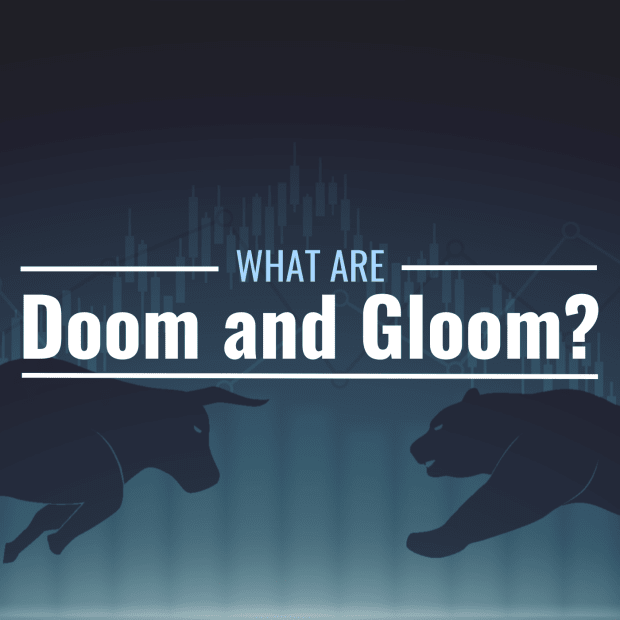
What Are Doom and Gloom?
“Doom and gloom,” or “gloom and doom,” is an expression used to describe a pessimistic or negative outlook on financial markets or the economy, typically following a precipitous decline in a financial asset’s benchmark or measure. It is most commonly associated with the U.S. stock market, particularly whenever the Dow Jones Industrial Average, a benchmark stock index, declines significantly in a day or over a period of days.
What Is the Origin of Doom and Gloom?
The term “doom and gloom” reportedly first appeared in newspapers in the 19th century and gained widespread use in the mid-20th century to describe despondency over politics, the economy, and the environment. The “gloom and doom” iteration gained popularity during the latter half of the 20th century.
How Are Doom and Gloom, or Gloom and Doom, Used?
Financial media often use the expression in their reporting to warn of an impending recession, or a collapse in the economy or financial markets, following a large sell-off in assets. The term is closely associated with the U.S. stock market, namely on the downward movement of the Dow, and some market observers have gained prominence for their forecasts.
Who Are the Doom and Gloom Forecasters (A.K.A Dr. Doom)?
In the stock market crash of 1987, when the Dow dropped almost 23 percent in a single day, some investors and analysts warned of further declines in stock prices and a slowdown in economic activity. An investment analyst, Marc Faber, gained prominence during that time for correctly predicting the market’s decline because of asset inflation, and warned clients to pull their investments. Faber earned the moniker “Dr. Doom” for his prognostication, and he has a monthly financial publication titled the Gloom, Boom & Doom Report to reflect the cyclical nature of economic booms and busts.
Prior to the global financial crisis and market sell-off of 2008, Nouriel Roubini, an economics professor at New York University, warned in 2006 of the U.S. economy slipping into recession should housing prices collapse. He also was called “Dr. Doom” for his forecast.
While both Faber and Roubini were popular for correctly predicting economic and stock market declines, they failed to provide guidance to investors about recoveries in the economy and financial markets. Within a few weeks of the market’s collapse in 1987, stocks embarked on an unprecedented bull run that lasted until the dot-com crash in 2000. After the global financial crisis in 2008, the stock market and the U.S. economy started to rebound the following year, in March, and the advance lasted until the COVID-19 pandemic. Concern of the virus spreading globally caused markets in many countries to crash in the first quarter of 2020. Many economies started to slow down, but again, the market downturn was short-lived and was quickly followed by yet another bull run.




!["[T]he First and Fifth Amendments Require ICE to Provide Information About the Whereabouts of a Detained Person"](https://images.inkl.com/s3/publisher/cover/212/reason-cover.png?w=600)


